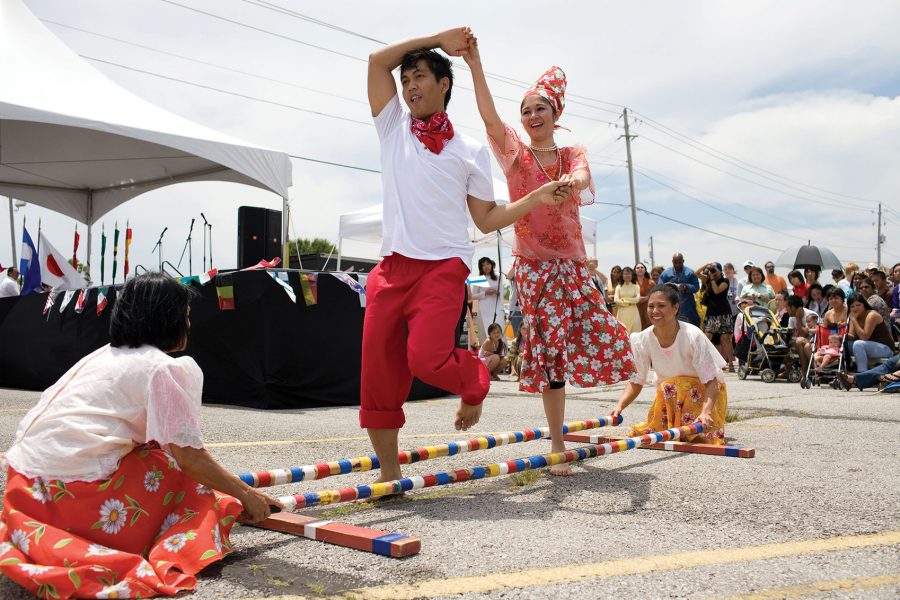My Filipina mother and I are in our Cebu hotel room, cackling together as she tries to teach me the steps for traditional tinikling dance. Step one, step two together, step one, she tells me. Then faster.
It’s easy when it’s just the two of us; less so when the music is pumping and two long bamboo poles are snapping together beneath our feet. That’s tinikling as it’s meant to be danced, and later, we watch the Sugbo Performing Arts troupe at Shangri-La Mactan, Cebu show us how it’s done – two “clickers” clap bamboo together, while a pair of barefoot dancers hop, leap and spin over the poles.
“It’s not easy to dance between bamboo,” acknowledges choreographer Michael Limosnero of White Note Pavilion , a Cebu theatre and show that performs tinikling. “You need the timing – it’s challenging.”
Originating in Leyte, a city in the same Visayas archipelago as Cebu, the dance has become a source of national pride. Before the Spanish colonised the Philippines in the 1500s, tinikling was already being danced by Filipinos. It would evolve to incorporate more Spanish elements over the years, especially in the costumes and music, and continues to be danced to this day.
The dance’s name refers to the movement of tikling, or buff-banded rail birds. Dancers replicate the birds’ movements as they escape from bamboo traps set by farmers. Through banging together bamboo poles, early practitioners developed rhythmic patterns which were later shaped into a recognised art form.
At the Shangri-La’s “cultural buffet”, Kasadya Night , women dressed in butterfly-sleeved terno dresses and floral hair adornments fly between poles clacking to the beat of the music. There’s an “enthusiastic, balletic” quality to the dance, as Sugbo lead dancer Maybelle Carba puts it. “It’s a representation of the resilient Filipino spirit.”
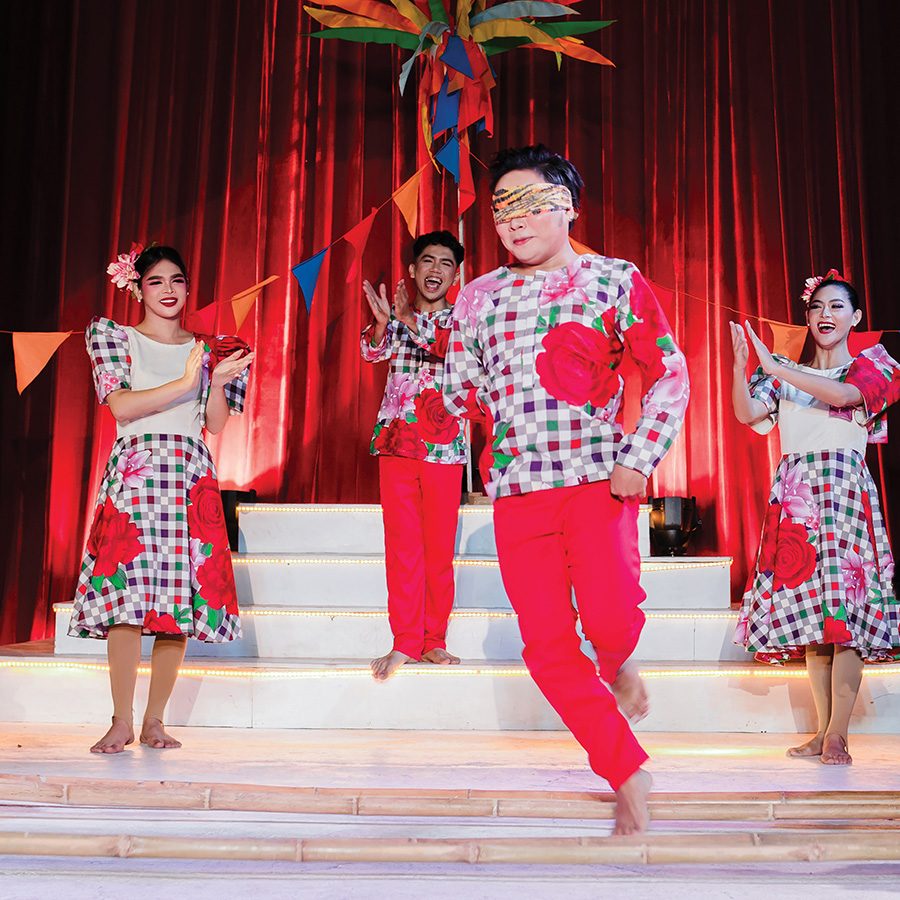
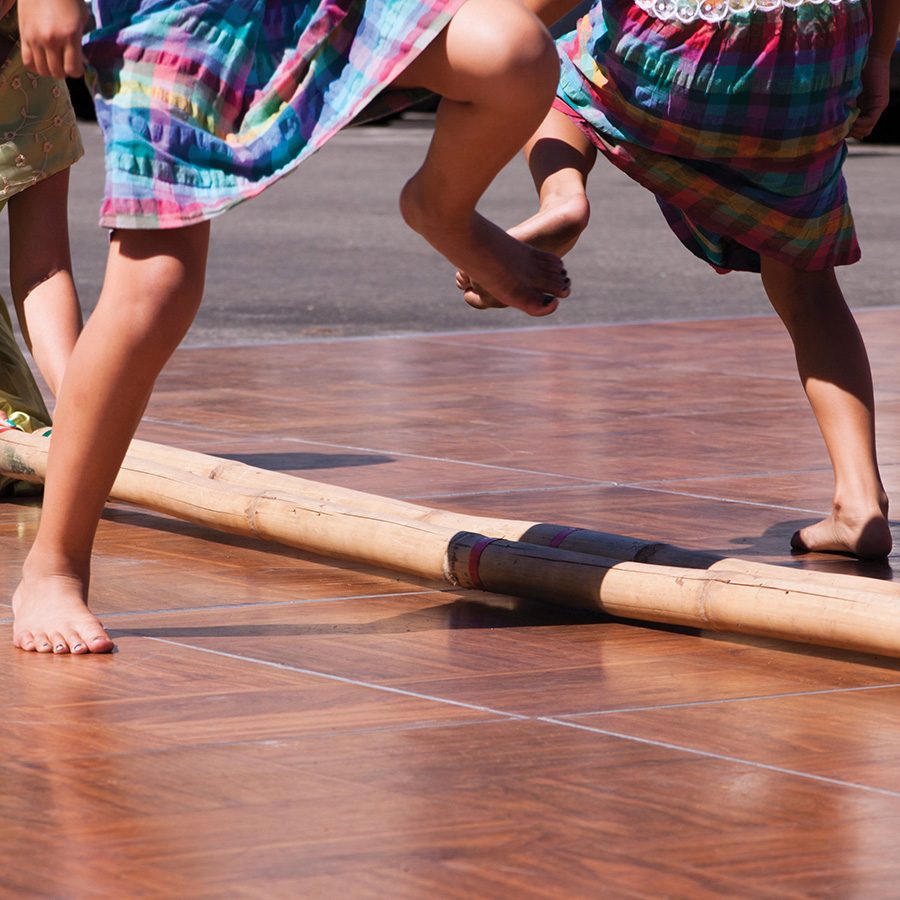
Credit: AlamyStockPhoto
Dance dance revolution
My earliest memory is watching my mother teach the dance to my brother’s class when I was still in primary school in Hong Kong. She hand-sewed bandannas and costumes, sourced bamboo poles from construction sites and choreographed a performance for our school’s cultural show.
Tinikling is a dance that feels deeply familiar, passed down from generation to generation – a way of documenting our shared history through movement. Catherine Carmen, another Sugbo lead dancer, explains that tinikling has a way of “strongly binding us to Filipino cultural identity”. She says, “It reminds us of who we really are, our roots and traditions that manifest in daily living.”
There’s a fierce protectiveness over tinikling and other folk dances in the Philippines. Michael Limosnero has seen backlash on social media against certain routines which move away from the traditional forms. He says that’s not necessarily a bad thing, however: “It preserves the originality and the authenticity of the dance. It’s a unique dance to us; we’re dancing from the heart and from our history.”
Still, troupes have found ways to push boundaries. Variations include moving the poles while dancing, blindfolding dancers to demonstrate their skill or even setting the poles alight to add an intimidating new layer.
Others create something new. A hip-hop-style tinikling routine at Georgia Institute of Technology in the US went viral for trading traditional music for Lil Nas X and traditional costumes with streetwear. In this intriguing variation, two pairs of poles were laid over one another in a cross hatch, meaning dancers had double the number of poles to dodge.
Ethan Ray, the former president of the university’s Filipino Student Association and the choreographer behind the dance, was taught by his mother growing up and wanted to blend both sides of his Filipino American identity. “I’ve navigated the challenge of preserving our rich cultural traditions while also creating a unique identity,” he says. “This choreography highlighted that balance, sparking conversations about the evolution of our culture.”
Jamez de Ocampo, choreographer for the society’s upcoming spring festival, is keen to blur the lines between tradition and modernity further to “bring a fresh energy” while respecting its roots.
“We’re making tinikling accessible and exciting for a broader audience, ensuring that it continues to thrive,” says Ray. “At the same time, it’s important to keep the traditional form alive and respected.”
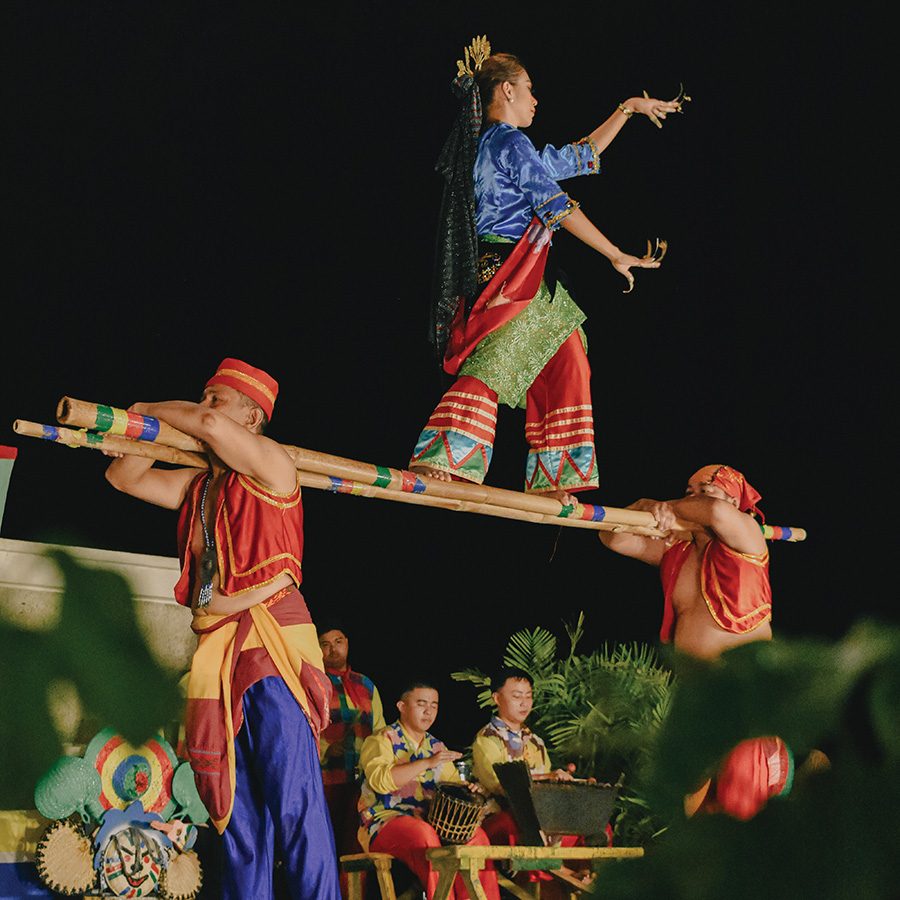
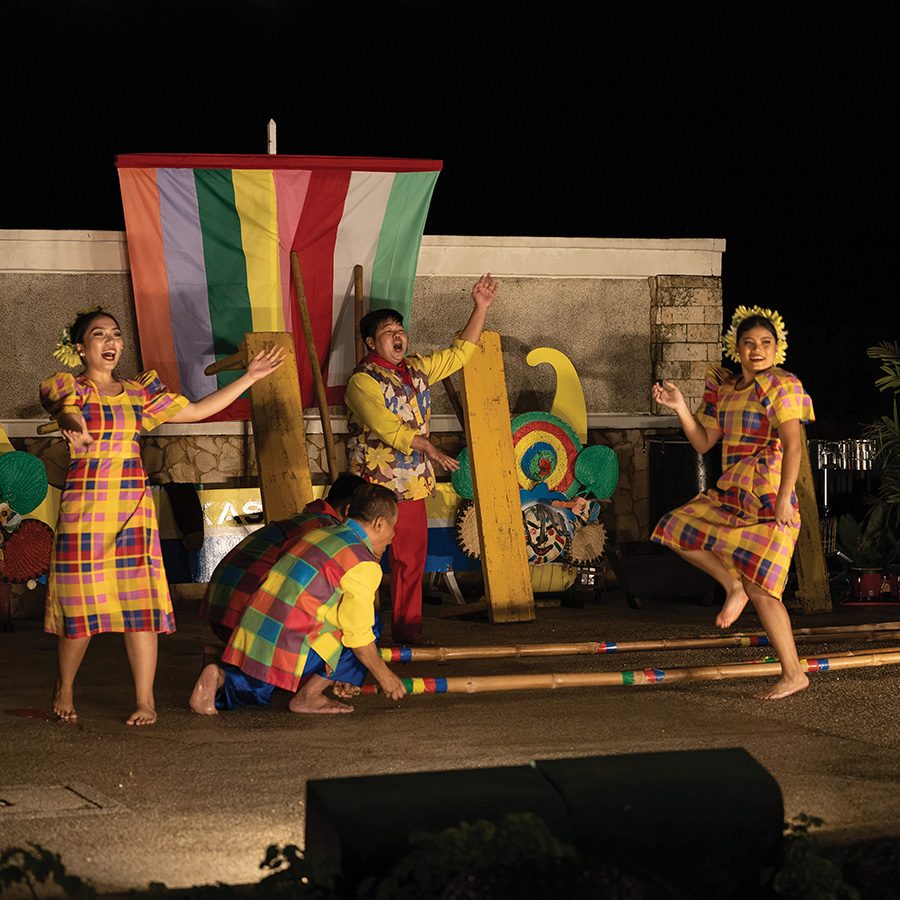
Keeping it in the family
Back at the Shangri-La Mactan, the troupe finishes a dizzyingly fast performance then invites audience members to give it a go. Emboldened by our earlier session, I go up with Maybelle Carba.
I manage the slower pace, then the poles speed up. I panic, star jumping and landing awkwardly outside them to avoid trapping my ankles. My mother laughs as she watches, and I can’t stop giggling either.
It’s terrifying. It’s so fun. I’m proud of the few awkward moments I manage the dance. It feels like a gateway to my own heritage: something that sometimes feels inaccessible as a mixed-race Filipina. Later, Jamez de Ocampo talks to me about the pamilya – family – energy that he’s embraced through tinikling. The word feels fitting.
He says, “It’s an energy that unites us across generations and distances.”
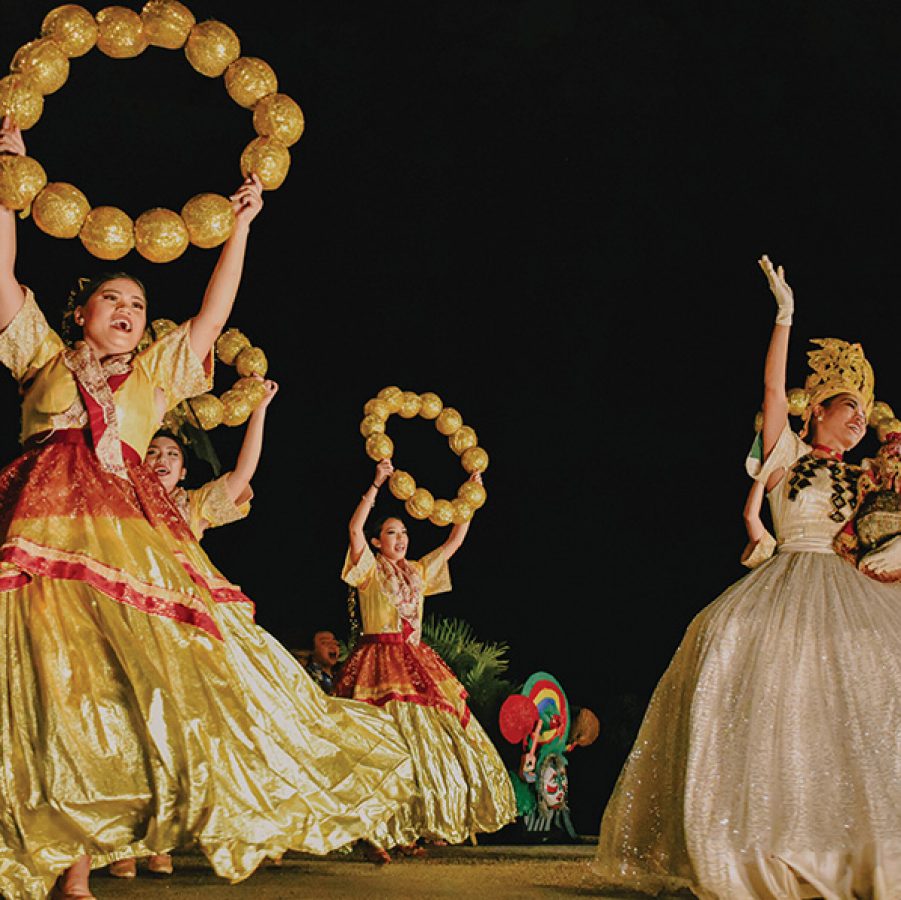
Credit: Madkon Productions
Where to watch folk dance in Cebu
Shangri-La Mactan, Cebu
The island resort runs Kasadya Night , a cultural buffet and live show, every Tuesday, Friday and Saturday.
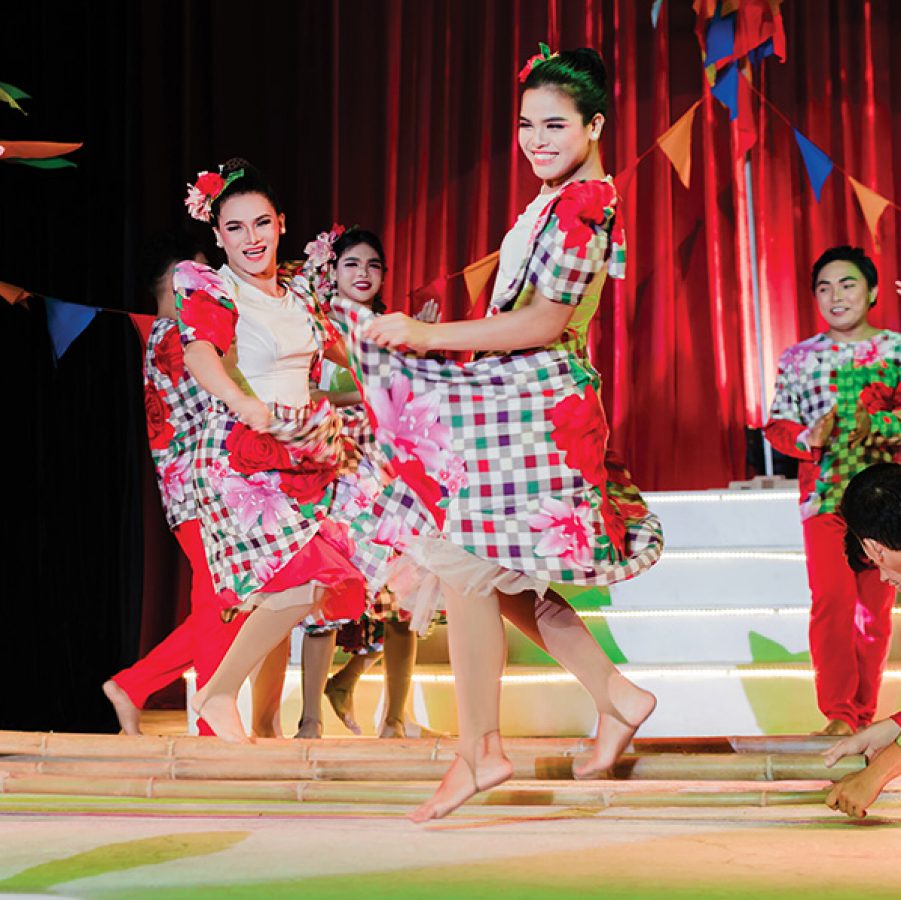
White Note Pavilion
This variety show and theatre combines traditional tinikling with singing, drag performances and comedy.
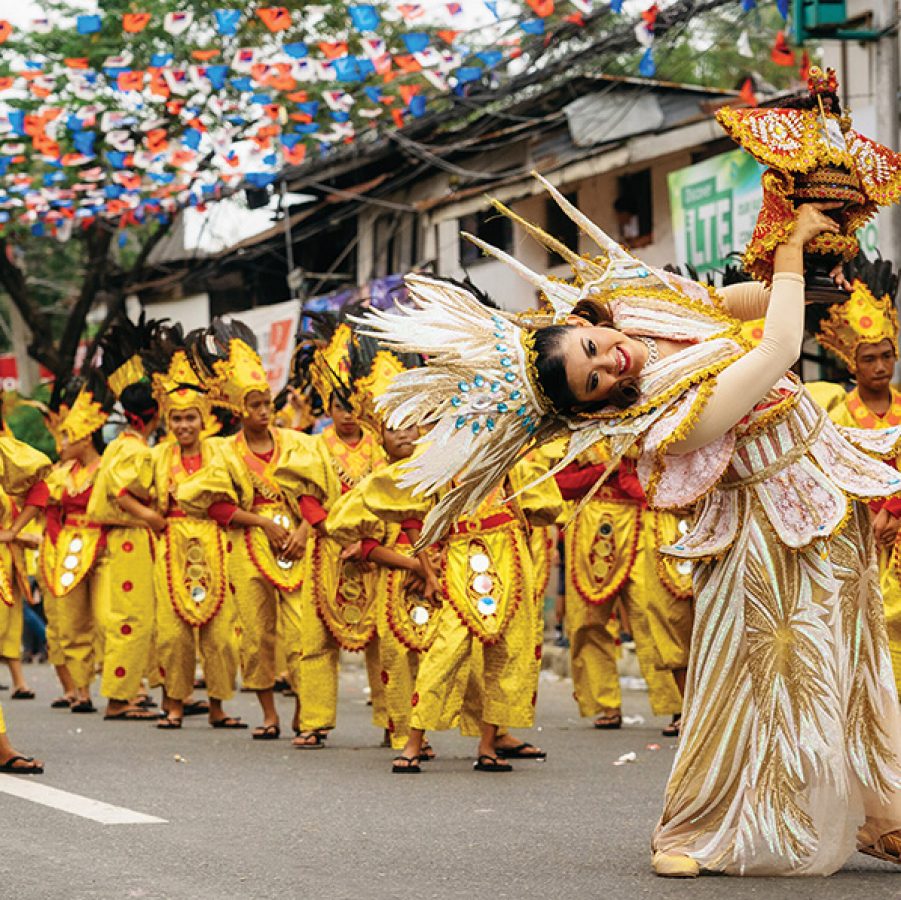
Credit: bortnikau/Getty Images
Sinulog Festival
Each January, during the Sinulog festival , traditional sinulog dancers sway while holding a baby Jesus statue.

Credit: Holger Leue/Getty Images
Loboc River Cruise, Bohol
During a Loboc River cruise in nearby Bohol, the Gotozon Balsa Performers Association dances tinikling to live music.
More inspiration
Cebu travel information
- China – the Chinese Mainland, Hong Kong SAR, Macao SAR and Taiwan Region
- Hong Kong SAR - English
- Chinese Mainland (China) - English
- Taiwan, China - English
- 香港特別行政區 - 繁體中文
- 中国內地 - 简体中文
- 中國台灣 - 繁體中文
- Africa
- South Africa - English
- Asia
- Bangladesh - English
- Korea - English
- Singapore - English
- Cambodia - English
- 한국 - 한국어
- Sri Lanka - English
- India - English
- Malaysia - English
- Thailand - English
- Indonesia - English
- Maldives - English
- ประเทศไทย - ภาษาไทย
- Indonesia - Bahasa Indonesia
- Myanmar - English
- Vietnam - English
- Japan - English
- Nepal - English
- Việt Nam - tiếng Việt
- 日本 - 日本語
- Philippines - English
- Australasia
- Australia - English
- New Zealand - English








